Clear view in wet conditions
UV-Vis spectroscopy: Polarizing sunglasses block the glare from wet surfaces

As the days become longer, sunglasses are a common sight again. Today, there are no limits to design and color of frame and glasses.
But not all design choices are purely aesthetic: Yellow glasses for example enhance contrast while the advantage of green glasses is lower color distortion.
Important for the necessary protective functions are the shading (attenuation of the transmitted light) and the wavelength range covered. Both are optimized by the choice of base material and coating. Quality glasses block all light of wavelength 400 nm and below for complete UV protection.
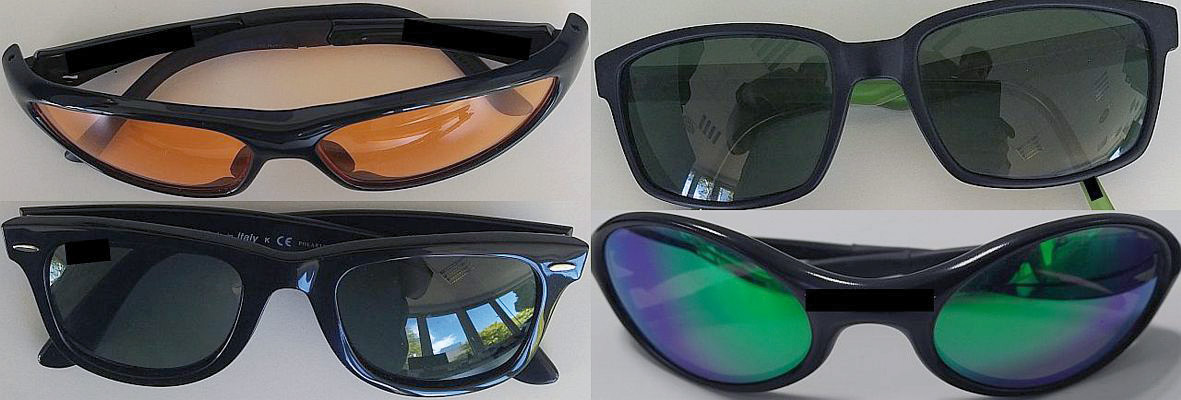 Figure 1: Investigated sunglasses. Upper half: Models without polarizing filters, lower half: Models with polarizing filters.
Figure 1: Investigated sunglasses. Upper half: Models without polarizing filters, lower half: Models with polarizing filters.
A special case are polarizing sunglasses, promoted for watersports and car driving purposes, just to name two examples. In this case, polarizing filters are built into the glasses which block horizontally polarized light. Sunlight is generally unpolarized, but the reflection on a smooth surface causes a polarization horizontal to that surface. Polarizing filters are supposed to protect the user from this glare.
Polarization on a surface
Light can be described as an electromagnetic wave, as shown in figure 2, with propagation direction C, wavelength l, electric field vector E and magnetic field vector B perpendicular to E. The direction of the electric field vector is also described as polarization. A beam of light is composed of many such waves with the same direction of propagation. Depending on the light source, the properties of these photons can be very different (e.g. sunlight) or uniform (e.g. laser).
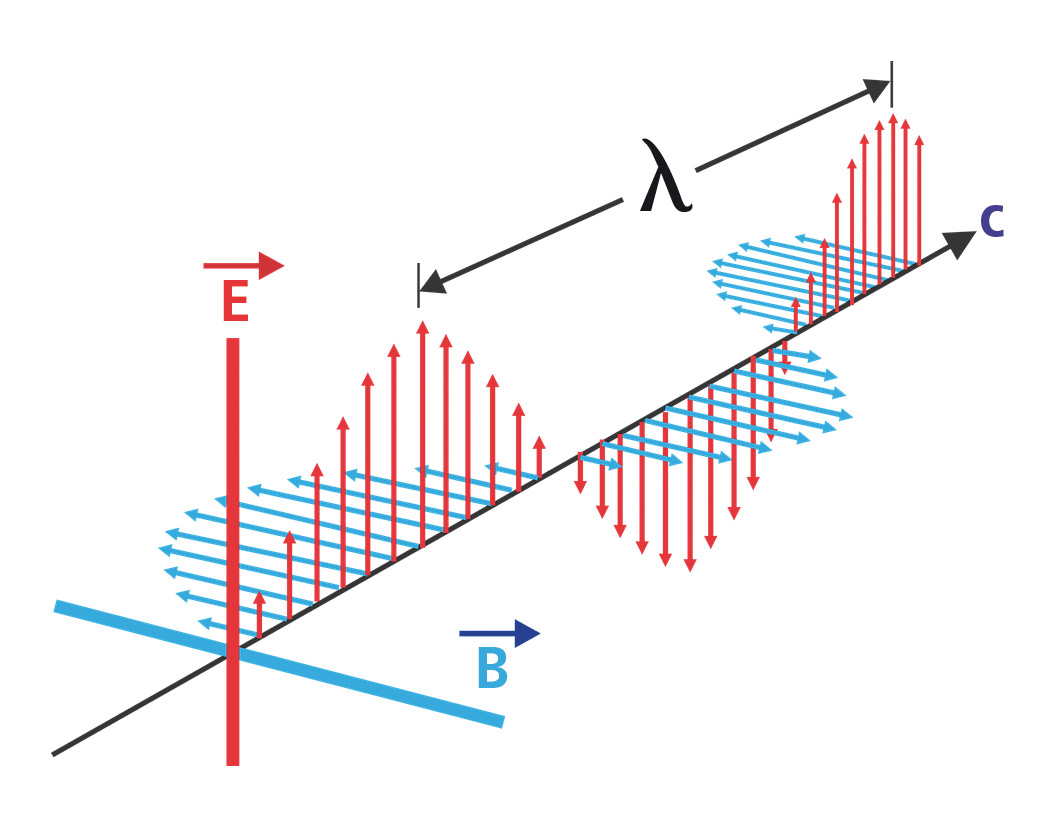 Figure 2: Vector representation of an electromagnetic wave with propagation direction C, wavelength Λ, electric field vector E and magnetic field vector B.
Figure 2: Vector representation of an electromagnetic wave with propagation direction C, wavelength Λ, electric field vector E and magnetic field vector B.
The beam of light is polarized when some polarization directions are filtered out and one polarization direction becomes dominant. One example is reflection on a smooth surface, as shown in figure 3. The light with polarization horizontal to that surface is reflected to a higher degree [1], e.g. by snow or water, but also by the optical element of a UV-Vis spectrophotometer, such as a mirror or grating. The degree of polarization depends on the angle of incidence in both cases.
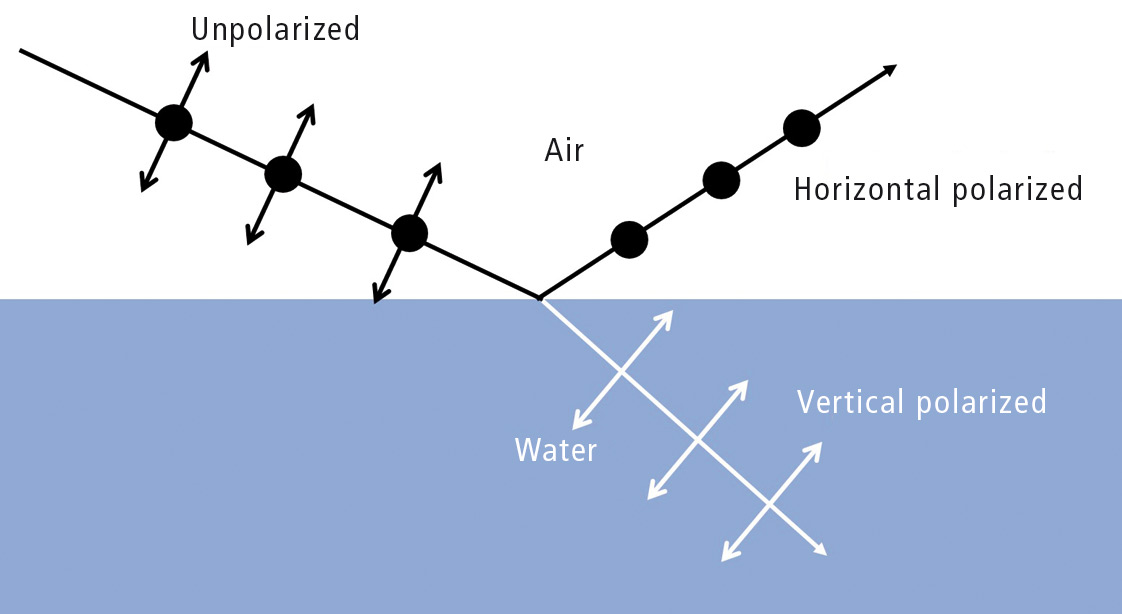 Figure 3: Polarization by reflection on a surface. Light with polarization vertical to the surface enters the surface, meaning that the horizontally polarized light is reflected. The degree of polarization depends on the angle of incidence.
Figure 3: Polarization by reflection on a surface. Light with polarization vertical to the surface enters the surface, meaning that the horizontally polarized light is reflected. The degree of polarization depends on the angle of incidence.
This polarization of the sample beam must be compensated for when a sample with polarizing properties is examined. A polarizer (figure 4, left side) is transparent only to light with one polarization direction and is used to enforce a complete polarization of the sample beam. By this, polarization effects (e.g. by reflection from the sample) are eliminated. A depolarizer (figure 4, right side) converts polarized light into completely unpolarized light [2].
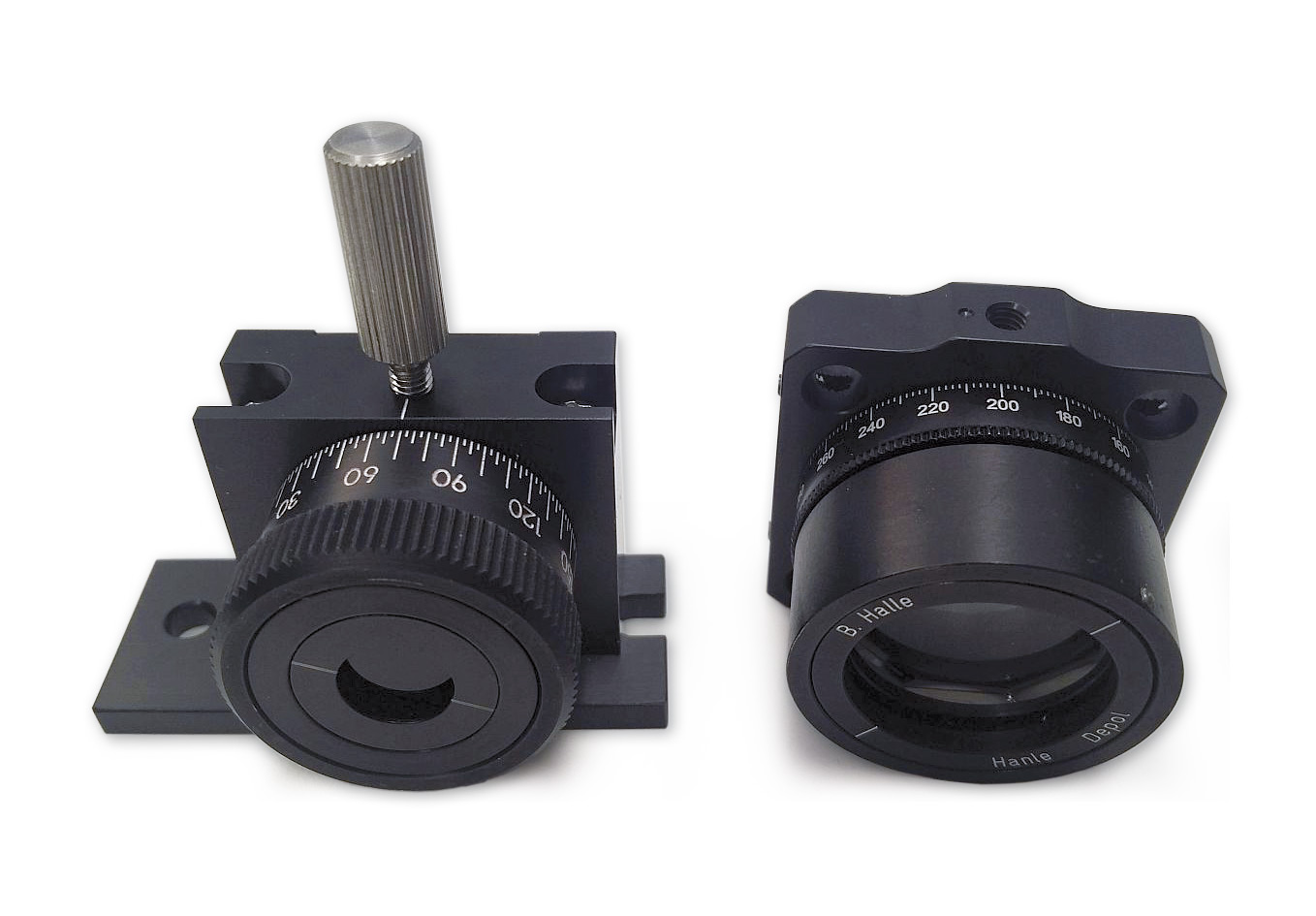 Figure 4: Polarizer (left) and depolarizer (right). The line on the polarizer mount indicates the polarization direction of the transmitted light.
Figure 4: Polarizer (left) and depolarizer (right). The line on the polarizer mount indicates the polarization direction of the transmitted light.
Setup and samples
For the measurements described here, a Shimadzu UV-3600 Plus spectrophotometer was used. The baseplate of the rotating film holder accessory was used for mounting the polarizer and depolarizer. This setup is shown in figure 5. To compare the effects of polarized and unpolarized light, a foil polarizer (spectral range 400 – 700 nm) and a Hanle depolarizer (spectral range 180 – 2,500 nm) were used.
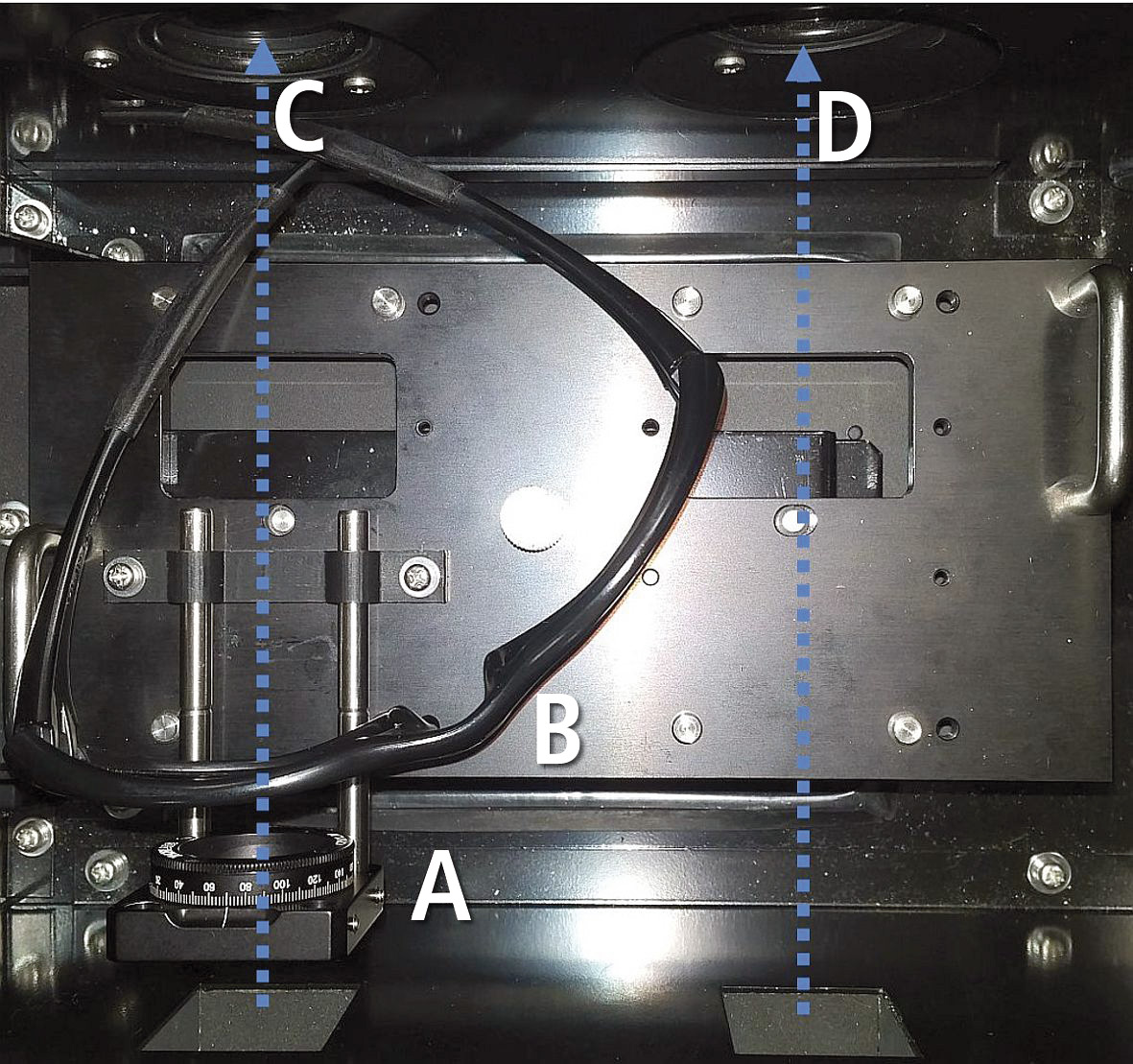 Figure 5: Experimental setup. A: Mounting position for polarizer or depolarizer, B: Sunglasses, C: Sample beam, D: Reference beam.
Figure 5: Experimental setup. A: Mounting position for polarizer or depolarizer, B: Sunglasses, C: Sample beam, D: Reference beam.
Two different sunglasses with polarizing filters and two different sunglasses without polarizing filters were investigated. The samples were carefully positioned so that the frame didn’t block the sample beam. Of each sample, the transmission spectrum was measured in the wavelength range of 400 – 700 nm in four different configurations:
- without any additional optics in the light path
- with unpolarized light (depolarizer in position A)
- with vertical polarized light (polarizer set to 0° in position A)
- with horizontal polarized light (polarizer set to 90° in position A).
Polarizing filters for selective absorption
Figure 6 shows the transmission spectra of the sunglasses described above. The samples are labelled by their glass color as orange (upper left), green (upper right), black (lower left) and multicolored (lower right). The spectra are arranged analog to the photos of figure 1.
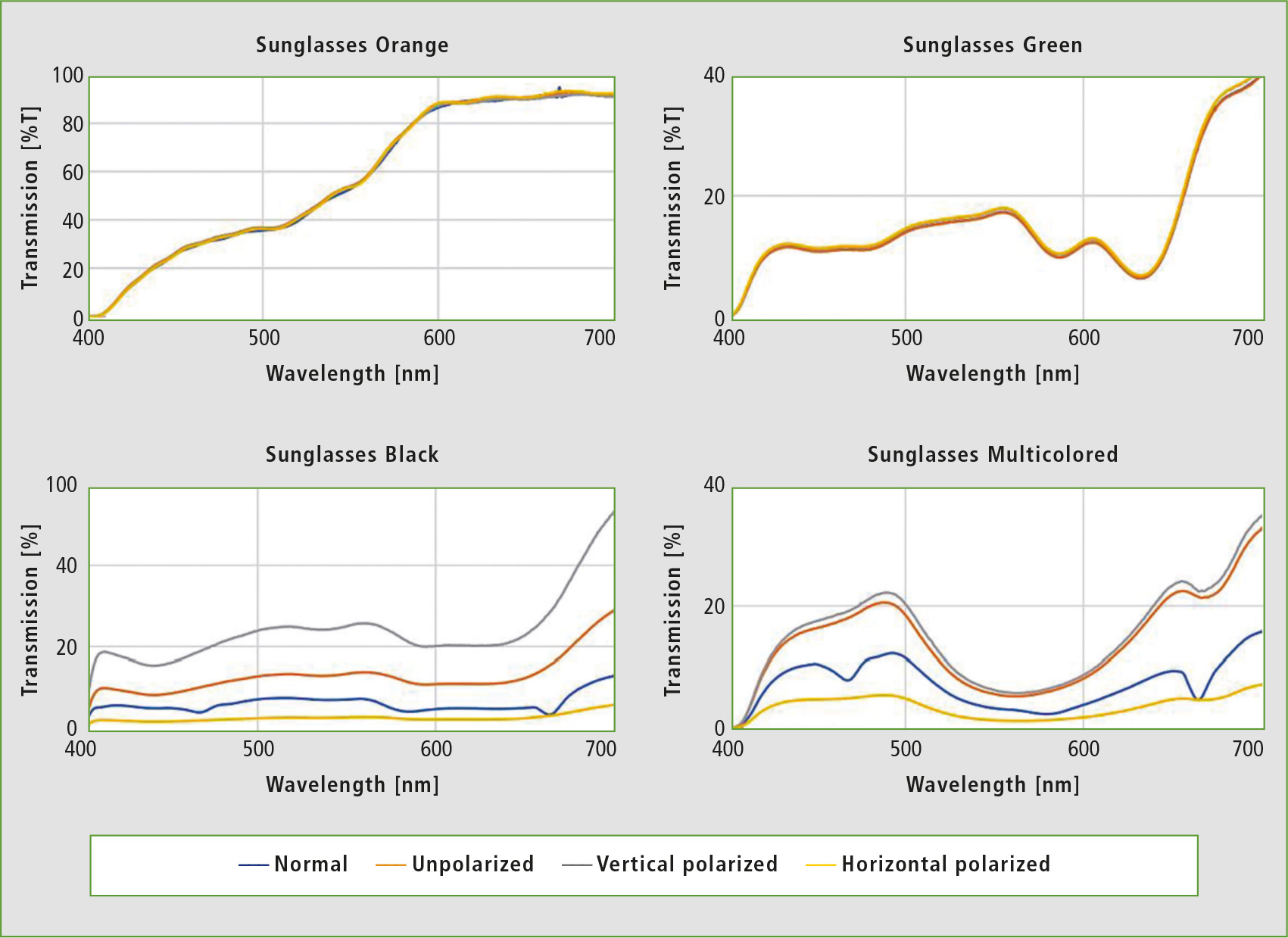 Figure 6: Transmission spectra of the four sunglasses from figure 1, each measured in four configurations and in the spectral range of 400 – 700 nm. Upper half: Samples without polarizing filters, lower half: Samples with polarizing filters.
Figure 6: Transmission spectra of the four sunglasses from figure 1, each measured in four configurations and in the spectral range of 400 – 700 nm. Upper half: Samples without polarizing filters, lower half: Samples with polarizing filters.
Only the spectra of polarizing glasses without additional optics show peaks at 470, 580 and 665 nm. Transmission in these measurements is also below the values measured for the same glasses with a depolarizer in the light path. This shows that the sample beam is horizontally polarized to some degree. As the degree of polarization depends on the angle of incidence to the polarizing element, this absorption is only indirectly dependent on the wavelength. The spectra measured without depolarizer are influenced by such polarization effects.
For the orange and green sunglasses, all four spectra are congruent. The polarization of the sample beam does not have any influence on the measurements. This is different to the spectra of the black and multicolored sunglasses. As expected from sunglasses promoted for watersports, the transmission for horizontally polarized light is very low. The black sunglasses show transmission values of around 20 % for vertical polarized light in this measurement range, but only 10 % for unpolarized light and less than 5 % for horizontal polarized light.
This effect is weaker with the multicolored sunglasses. The spectra measured with unpolarized and vertically polarized light are nearly congruent. The attenuation of horizontally polarized light is still remarkable though. The best attenuation is observed in the spectral range of 500 – 620 nm, while the black sunglasses show an even attenuation over the whole spectral range up to 650 nm.
Conclusion
Many projects in the optic industry are concerned with polarized light. Using a depolarizer will ensure that the sample is irradiated with completely unpolarized light. Measurement artifacts are therefore avoided and the true properties of polarizing samples are elucidated.
Literature
[1] https://en.wikipedia.org/wiki/ Polarization_(waves)
[2] https://en.wikipedia.org/wiki/Depolarizer_(optics)
Further information on this article
• Application: SCA-100-022_Sunglasses